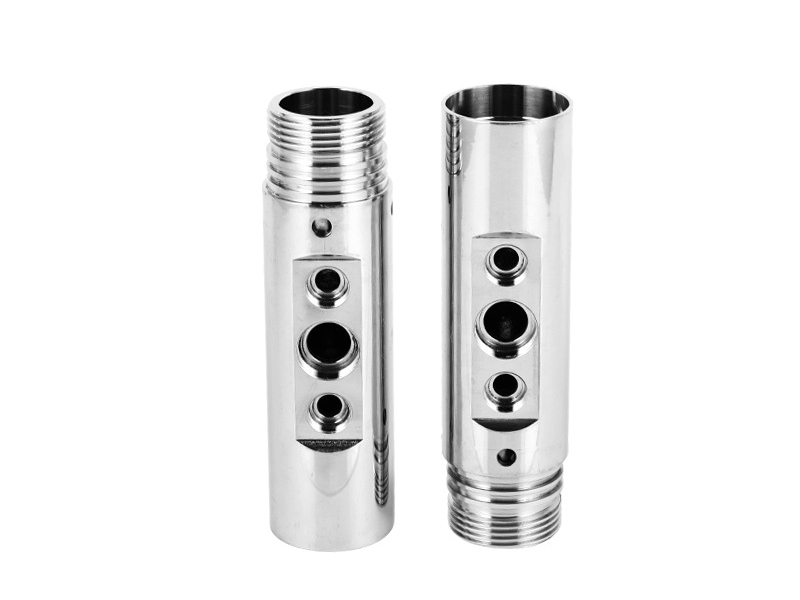CNC Turning of Stainless Steel Components for Medical Device Manufacturing
Introduction
The Medical Device industry demands components that combine precision, biocompatibility, corrosion resistance, and mechanical durability. Stainless steel alloys, renowned for excellent corrosion resistance, strength, biocompatibility, and ease of sterilization, are extensively used to produce critical medical components like surgical instruments, implants, fittings, and precision equipment parts.
High-accuracy CNC turning services are indispensable for manufacturing stainless steel medical components. CNC turning delivers precise dimensional control, intricate geometries, and superior surface finishes, meeting strict regulatory and quality standards necessary for safe and reliable medical device applications.
Stainless Steel Materials
Material Performance Comparison
Stainless Steel Alloy | Tensile Strength (MPa) | Yield Strength (MPa) | Corrosion Resistance | Typical Applications | Advantage |
|---|---|---|---|---|---|
485-650 | 170-310 | Excellent (Surgical-grade) | Surgical instruments, implants | Superior biocompatibility, corrosion resistance | |
505-700 | 215-250 | Good | Medical fittings, brackets | Good corrosion resistance, excellent formability | |
900-1310 | 690-1170 | Very Good (Precipitation-hardened) | High-load surgical tools, precision components | High strength, excellent mechanical durability | |
655-1000 | 345-655 | Good (Martensitic stainless steel) | Precision surgical blades, cutting tools | Excellent hardness, high wear resistance |
Material Selection Strategy
Selecting the optimal stainless steel alloy for medical devices depends on specific application requirements:
Surgical instruments and implants demanding superior corrosion resistance and biocompatibility: Stainless Steel SUS316L is ideal.
Standard medical fittings and brackets: Stainless Steel SUS304 provides a balanced strength, formability, and corrosion resistance performance.
High-strength, high-load surgical tools requiring enhanced mechanical durability: Stainless Steel SUS630 (17-4PH) delivers superior mechanical properties and corrosion resistance.
Precision surgical blades and cutting instruments needing high hardness: Stainless Steel SUS420 provides exceptional wear resistance and hardness.
CNC Turning Processes
Process Performance Comparison
CNC Turning Technology | Dimensional Accuracy (mm) | Surface Roughness (Ra μm) | Typical Applications | Key Advantages |
|---|---|---|---|---|
±0.005-0.015 | 0.4-0.8 | Surgical tools, precision implants | Precise dimensional accuracy, consistent, high-quality finish | |
±0.005-0.02 | 0.6-1.2 | Complex medical fittings, prosthetic joints | Efficient production, complex geometry capability | |
±0.01 | 0.8-1.6 | General medical device components, connectors | Optimized stainless steel machining, cost-effectiveness | |
±0.002-0.01 | 0.2-0.4 | Precision surgical blades, valves | Superior surface finish, ultra-tight tolerances |
Process Selection Strategy
Choosing suitable CNC turning technologies for medical stainless steel components involves assessing precision, complexity, and functionality:
Surgical instruments and precision implants: Precision CNC Turning ensures critical dimensions and surface finishes are maintained.
Complex, multi-dimensional components such as prosthetic joints and intricate fittings: Multi-Axis CNC Turning reduces setups and enhances precision.
Standard medical connectors, brackets, and general components: Stainless Steel CNC Machining provides efficient, specialized machining solutions.
Components demanding highest surface accuracy and quality: CNC Grinding Service delivers unmatched surface smoothness and dimensional precision.
Surface Treatment
Surface Treatment Performance
Treatment Method | Biocompatibility | Corrosion Resistance | Wear Resistance | Typical Applications | Key Features |
|---|---|---|---|---|---|
Excellent | Superior (≥800 hrs ASTM B117) | Moderate-High | Surgical instruments, implants | Smooth surface, enhanced corrosion resistance, improved hygiene | |
Excellent | Excellent (≥600 hrs ASTM B117) | Moderate | Medical fittings, brackets | Clean surface, maximized corrosion resistance | |
Good | Superior (≥1000 hrs ASTM B117) | High (HV2000-3000) | Surgical blades, cutting tools | Extreme hardness, superior wear resistance | |
Good | Very Good (≥500 hrs ASTM B117) | Moderate | Instrument handles, external fittings | Aesthetic appearance, good corrosion resistance |
Surface Treatment Selection
Selecting the optimal surface treatment enhances the functionality and longevity of medical stainless steel components:
Surgical instruments and implants demand high corrosion resistance and hygiene: Electropolishing ensures superior smoothness and biocompatibility.
General medical fittings and instruments: Passivation maximizes corrosion resistance and surface cleanliness.
Surgical blades and cutting components subject to significant wear: PVD Coating offers exceptional hardness and wear resistance.
Aesthetic handles and external fittings: Anodizing provides appealing visual finishes and effective corrosion protection.
Quality Control
Quality Control Procedures
Comprehensive dimensional verification using Coordinate Measuring Machines (CMM) and precision gauges.
Surface roughness checks with advanced profilometers.
Mechanical property verification, including tensile strength, hardness, and yield strength tests according to ASTM and ISO standards.
Biocompatibility testing and certifications per ISO 10993 standards.
Corrosion resistance evaluations using ASTM B117 salt spray testing protocols.
Complete documentation and traceability compliance adhering to ISO 13485, FDA regulations, and medical device industry standards.
Industry Applications
CNC-Turned Stainless Steel Applications
Precision surgical instruments and specialized medical tools.
Durable and biocompatible orthopedic implants.
Precision medical fittings, connectors, and brackets.
High-performance cutting blades, valves, and surgical components.
Related FAQs:
Why is stainless steel essential in medical device manufacturing?
How does CNC turning ensure precision in stainless steel medical components?
Which stainless steel alloy offers the best corrosion resistance for surgical implants?
What surface treatments enhance biocompatibility in medical devices?
What quality standards govern CNC-turned stainless steel components for medical applications?
2/2

